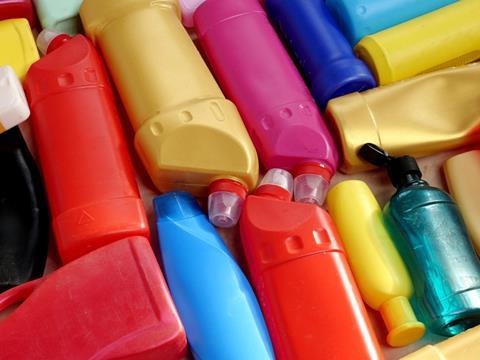
In this article, Gary Panknin, Sustainability Officer and Supply Chain Manager at PakTech, gives his opinions on how new packaging materials could start changing old sustainability assumptions.
The packaging industry faces a paradox. While 85% of industry decision-makers recognise that plastics are essential to supply chains, misconceptions about recycled materials and fear of consumer backlash continue to stall progress and perpetuate adoption barriers.
Against constant pressure to balance performance, sustainability, and consumer perceptions, brands often struggle to make packaging decisions that truly align with their sustainability goals. This challenge is especially distinct in secondary beverage packaging, where each material comes with unique strengths and accompanying misconceptions among industry decision-makers and consumers alike.
With growing evidence that recycled plastics – especially recycled HDPE (rHDPE) – can deliver both performance and sustainability benefits, these materials are poised to make an impact on secondary packaging innovation.
Equipped with data-driven insights, we can challenge inaccurate assumptions, examine the industry readiness gap, zoom into recycled plastic performance advances, and explore how circular economy systems could redefine packaging standards.
The industry readiness gap
When it comes to plastic, the pervasive negative sentiment often deters brands from exploring sustainable options – just to sidestep any potential backlash. There’s a distinct readiness gap in the packaging industry’s adoption of eco-friendly plastic solutions, where we see perceptions at odds with demonstrated sustainability performance.
The result? A cycle of underutilised proven solutions and missed opportunities, fuelled by unchallenged misconceptions and a prominent knowledge deficit.
It’s not just consumers who are vulnerable to such misconceptions, either. Over half of European industry decision-makers significantly underestimate recycling capabilities. 32% believe HDPE can only be recycled two to five times before degrading.
In reality, HDPE can be recycled up to ten times while maintaining its processability and mechanical properties – or virtually indefinitely, with the addition of new materials. Evidently, there’s a significant untapped potential for plastics to be recycled and used responsibly across the industry. Yet the negative sentiment around plastic can’t simply be attributed to this knowledge deficit alone.
Studies consistently show that consumers associate paper packaging with environmental benefits, even when presented with opposing lifecycle data. These findings point to the “green halo” effect – an unconscious bias that favours materials perceived to be natural or eco-friendly.
This may explain why 63% in France and 61% in Germany favour glass, whereas 62% in the UK support paper in terms of sustainability. In contrast, over half (53%) of industry professionals – who tend to have a deeper understanding of packaging materials’ environmental trade-offs – consider recycled plastic to be more sustainable than recycled fibre.
Let’s take a closer look at fibre. It has its advantages and can indeed be a sustainable option in many situations. Yet evidence suggests that the reality is more nuanced when it comes to secondary packaging. For instance, lifecycle analysis (LCA) data has shown rHDPE multipacking to have a carbon footprint of 0.022-0.034 kg CO₂-eq and a Global Warming Potential that’s two to five times lower than paperboard alternatives. Despite prevailing perceptions about plastic’s environmental value, this use case demonstrates how multipacking LCAs can favour rHDPE over fibre across various metrics.
Performance is paramount
Beyond sustainability, packaging materials need to be strong, durable, moisture-resistant, lightweight, and compact. Among consumers, 36.6% consider environmental impact to be extremely or very important when making purchasing decisions.
However, 60-70% rank food safety and shelf life as the most important packaging characteristics, with environmental impact in second-last place. Given the broader economic pressures on household budgets, we can gather that consumers today are likely to prioritise functional packaging attributes over sustainability.
Fortunately, thanks to advances in recycled plastics, sustainability no longer comes at the expense of functionality. The key lies in material selection, processing conditions, and application-specific design factors. Consider beverage applications, for one. Resistance to moisture, impact, and changing supply chain conditions are vital.
Fibre-based materials tend to lose bending stiffness, edge crush strength, and durability as relative humidity rises toward 70-90% – common in cold-chain and retail settings – with significantly higher damage rates and product loss in humid conditions. In contrast, rHDPE exhibits excellent resistance to moisture, maintaining reliable structural integrity, impact resistance, and reliable tensile strength across varying conditions.
A new era in the circular economy
Recycled plastics like rHDPE are paving the way forward in both sustainability and functional performance for packaging applications. That’s because circular economy systems make it possible to transform post-consumer waste into high-performance packaging as they re-enter the value chain.
To close the loop on post-consumer waste, secondary beverage packaging, for instance, offers a practical circular economy application. Think: old milk jugs, juice bottles, and other household containers – all given another lease of life as functional secondary rHDPE packaging that’s both high-quality and low-carbon.
This system works within existing infrastructure too, as circular plastics already represented over 15% of total European plastics production in 2024. Each recycling cycle diverts waste from landfills while reducing virgin material demand. Compared to virgin plastic, using rHDPE for secondary packaging also reduces greenhouse gases by 78%; energy use by 90%; and virgin petroleum use by 100%.
rHDPE secondary multipacking can also be recycled for another life as new packaging, composite decking, park benches, planter pots, and more. This approach to responsible plastics use thereby creates and sustains a demand for recycled materials that might otherwise go to lower-value applications.
After all, regulatory drivers are drumming up increasing urgency. The EU Packaging and Packaging Waste Regulation calls for specific recycled content targets for plastic. These range from 10-30% for contact-sensitive packaging and single-use beverage bottles to 35% for all other plastic packaging by 2030.
It’s worth emphasising that the scope of this regulatory framework extends beyond voluntary commitments to mandatory requirements. For brands, proactively embracing circular plastic solutions could therefore help avoid supply chain disruptions and compliance penalties as adoption dates draw closer.
Bridging the gap
When it comes to advancing beverage packaging innovation with recycled plastics, the onus is ultimately on brands. Almost one in two European consumers (45.2%) – led by the French (53.2%) and German (50%) markets – want brands to be eco-friendly. That means the challenge isn’t just about adopting more sustainable multipack solutions. It’s also about shaping consumer opinions and perceptions.
As brands seek to educate people on packaging material choices, there’s a valuable opportunity to separate fact from fiction through transparent communication backed by robust LCA data. Relying on data-driven considerations can also help brands make better packaging decisions that unite responsible plastics use with great functional performance.
Recycled plastics are set to play a key role in driving the next wave of beverage packaging innovation. As we move to close the gap between potential and adoption, it’s not materials limitations, but the industry readiness gap, that remains as the primary barrier.
Recycled plastics – especially rHDPE – mean that packaging decision-makers no longer need to choose between sustainability and performance. It’s time for industry professionals and consumers alike to recognise that they can in fact have the best of both worlds.

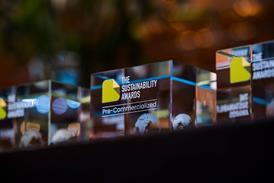

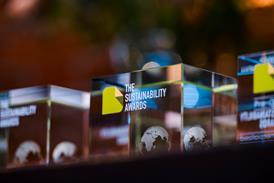
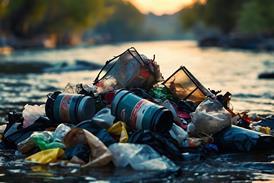
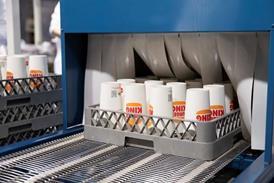











No comments yet